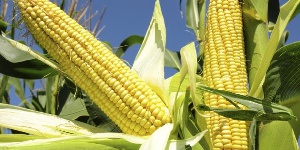Maize production could suffer a major setback, as farmers in one of the crop’s main growing areas in the country, Sissala East and West districts, are battling to have access to government’s subsidized fertilizer.
The subsidized input fertilizer, meant for the maize farmers in the area, was impounded when some unscrupulous people tried diverting the product to neighbouring Burkina Faso.
But the products have remained under lock and key at the offices of the Regional Coordinating Council (RCC) in the Upper West Region, depriving farmers of the main input needed to ensure improved yields.
Government, as part of the Planting for Food and Jobs program, has made available to farmers a host of incentives including subsidized fertilizer to help boost crop production.
But the inability of the input fertilizer to reach the farmers has seen them having to buy from the open market at very exorbitant prices with farmers who cannot afford the open market price having to watch as their crops wither in their early stages.
The most affected areas are Tumu and Gwollu with farmers and fertilizer dealers all reeling under the effect of the unavailability of the item on the market.
Despite a desperate plea made by various smallholder farmer groups to the Regional Director of the Ministry of Food and Agriculture (MOFA), farmers still do not have access to the subsidized fertilizers.
One of the key fertilizer dealers in the Upper West region who spoke to the B&FT on the condition of anonymity said: “This status quo really defeats the purpose of government policy of making fertilizer readily available to the Ghanaian farmer. It makes nonsense of Policy paradigms like Planting for Food and Jobs among others.”
It is the number one crop in terms of area planted (about 1,000,000 hectares) and accounts for 50-60% of total cereal production. Additionally, maize represents the second largest commodity crop in the country after cocoa. Maize is one of the most important crops for Ghana’s agricultural sector and for food security.
The total maize production in Ghana is done by about 70% of smallholder farmers. Maize average yield registered by the Ministry of Agriculture in 2013 was 1.7 Mt/ha against an estimated achievable yield of around 6 Mt/ha (
Planting for Food and Jobs
Finance Minister, Ken Ofori-Atta,- presenting the mid-year budget last week said GH¢366million was released by government to support the implementation of its Planting for Food and Jobs (PFJ) initiative during the first six months of the year.
The figure represents 52 percent of the GH¢700million allocated for the programme in the 2018 budget, the Finance Minister said during his mid-year budget review yesterday.
According to him, the funds were used for procurement of some 6,000 metric tonnes of improved seedlings and 120,000 bundles of cassava, among others.
“A total of 6,000 metric tonnes of improved seeds (70% of target) of maize, rice, soya bean, sorghum, groundnut and vegetables have been distributed across the country. In addition, 120,000 bundles of cassava sticks were distributed mainly in cassava-growing areas.
“As of end June, a total of 124,000 metric tonnes of fertiliser was supplied to farmers. Biometric registration to bring farmers registered under the programme to 500,000 from the initial 201,000 registered in 2017 is currently ongoing,” he said.
He further added that a number of fertiliser companies have been engaged for the supply and distribution of 270,000mt of both organic and inorganic fertiliser at 50 percent subsidised prices to farmers under the initiative.
Business News of Friday, 27 July 2018
Source: thebftonline.com













